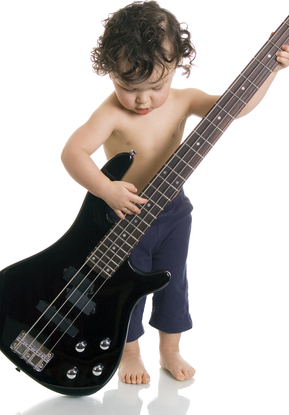Here you will find suggestions and tips for optimal packing and storage. Making the best use of this space and carefully storing your possessions will preserve them and save you money.
-
WHEN YOU ARE PACKING, REMEMBER TO LABEL THE CONTENTS OF EACH BOX.
-
FULL BOXES stack, load, and store better than a box with a box that is partially filled. Boxes that aren't full could collapse and damage the contents inside it and the boxes stacked on top of it. Put the heaviest boxes on the bottom of a stack.
-
PUT LARGER ITEMS IN THE STORAGE UNIT FIRST.
-
LEAVE A WALKWAY to get to the back of the unit so you have easier access to all stored items.
-
APPLIANCES. Remember to drain hoses and remove external components of clothes washers, dryers, dishwashers, and refrigerators to prevent freezing and mildew. Clean appliances carefully including lint filters, grids, or tubes. Keep refrigerators upright during transportation and storage to prevent damage. Make sure the Appliance is cleaned before it is stored. Remember, appliances should be put on the truck 'last' so they can be put in the storage unit 'first'. Remove any tape used to keep the doors of appliances closed during transport and store with doors ajar or removed to prevent mildew growth. Be sure to mark glass oven doors as 'Fragile'. Cover the appliance in a sheet to protect from dust and scratches, bubble wrap around glass and controls to prevent broken pieces. Store glass doors upright so nothing is stacked or falls on it. Large and small boxes store nicely on top of Appliances.
-
MATTRESSES & BOX SPRINGS. 'Mattress covers' protect the mattress from dirt, moisture, and unpleasant odors. For storage you might consider purchasing a mattress box from a moving supply company. They come in all the standard bed sizes and provide an extra level of protection for extended storage.
-
FURNITURE. Use pallets or boards to raise the floor underneath furniture to protect against flooding. Place a plastic tarp over this raised floor to create a moisture barrier.
Cover furniture with drop cloths or canvas tarps to keep dust off and allow airflow.
Store sofas and mattresses on end to maximize space and prevent overloading.
Disassemble beds and tables and wrap table legs in bubble wrap.
Place chairs upside down on tables which cannot be disassembled.
Stretch wrap cabinet doors or dresser drawers closed.
Use bubble wrap or cardboard to protect corners and edges.
Cardboard corner protectors on mirrors and framed art. Do not store flat. They will collapse under their own weight. Keep them upright and mark them as fragile.
Use dresser tops for stacking lightweight boxes and dresser drawers for small fragile items.
Avoid sealing anything in plastic. Trapped moisture can cause mold, mildew, and rot.
Remember, liquid screen TVs and computer monitors can freeze and break without climate control in the unit.
-
MIRRORS, CRYSTAL, & GLASS. Bubble wrap has become the most popular, secure, and efficient tool for storing, especially sheet glass. Be generous. Secure with packing tape and store against a wall up front so it will not be forgotten.
-
BOOKS. Boxes for book storage should be strong, clean, dry, and able to be closed. Ordinary cardboard cartons are suitable. Do not use boxes previously used to hold food, as food residue and odors will attract pests.
Small or medium-sized books can be packed lying flat or standing upright. Large heavy books should be stored lying flat. Never store books resting on the spine or the fore-edge (the front edge opposite the spine), as this can seriously damage bindings.
-
MUSICAL INSTRUMENTS. Pianos, guitars, cellos, violins, etc are tender items that need special care. They can crack or break if not well wrapped and can be sensitive to humidity and climate. Research the climate conditions then consider these tips:
Stringed Instruments: Loosen lightly the strings, wrap the instrument with bubble wrap, tape it, and place the instrument in its own case. Make certain nothing is placed on top of it.
Brass Instruments: Remove mouthpiece and pack it separately. Use lots of bubble wrap and place the Instrument in its case. Make certain nothing is placed on top of it.
Large Instruments: Pianos can be difficult to handle. Use padding and lots of packing supplies to protect them during shipping. Contact a mover for specific instructions if you are unsure of how to do this. Drums can be taken apart and packed in boxes.
If you don't have a case for each instrument you are packing, use a sturdy shipping box a little bigger than the instrument itself. It should not move around in the box or be packed with anything else.
-
HOLIDAY DECORATIONS. Place seasonal items are the front of the storage unit, so that you can get to them easily. Ornaments are best stored in their original box. If the original box is no longer available put them in sandwich bags and layer with paper. Make sure there is enough padding so there is no movement in the box. Egg cartons work well for small/tiny ornaments. Ornaments made out of macaroni and dough will attract pests, so be sure to use the sandwich bags for these types of ornaments. Mark this box Fragile!
-
AVOID STORING FOOD. Food will attract pests. If you do need to store food, make sure it is in air tight containers.
-
STORING VEHICLES There are a number of things to do before you lock the door and walk away. If you simply let your vehicle sit for an extended period of time, you may return to a dead battery, damaged engine, or ruined tires.
Clean it up. Water stains, chemicals, grease, mud or bird droppings left on the car can damage the paint and/or accelerate corrosion. For added protection give the car a coat of wax.
Change the oil. Ford recommends in it's owners manual to do this if you are storing for more than 30 days. Used oil has contaminants that could damage the engine.
Top off the tank. If you expect to store your vehicle for more than 30 days, fill the tank with gas to prevent moisture from accumulating in the fuel tank and keeping seals from drying out. A fuel stabilizer will prevent gas from deteriorating up to a year, ethanol buildup, and it protects the engine from rust varnish or gum.
Keep it charged. An unattended battery will lose it's charge over time. If possible, get someone to start the car every two weeks. If you can drive the car at least 15 minutes periodically, this will maintain the battery's charge and keep the engine lubricated. If this is not possible during storage, disconnect the negative battery cable which may alter stereo presets, time, and other settings. These can be reset when you are ready to use the vehicle again and your battery will have had the best chance of being preserved during storage if you could not attend to it.
Inflate tires to recommended pressure. If left stationary for too long the tires can develop flat spots as the weight of the vehicle presses down on the tire's footprints and they often need to be replaced. If storing the vehicle more than 30 days consider ensuring the integrity of the tires by taking the wheels off and placing the car on jack stands at all four corners.
-
STORING ELECTRONICS
Remove detachable cords and wires and store in a clearly labeled box.
Do not wrap in plastic as moisture can build up and get trapped inside. Use sheets or towels to wrap and store electronics.
Remove all batteries. Acid can leak and cause corrosion on the inside of the electronic device.
Silica gel packets packed with electronics dehumidify and help absorb any moisture before it can damage internal components.
Protect glass screens, monitors, or scanners with bubble wrap or foam padding. Mark all electronics as fragile and never stack anything on top of them.
Remove CDs, DVDs and Flash Drives left in the electronic.
-
SMALL MOVING BOXES. Each box should not weigh more than 50 lbs, so that when moving in and out of the storage unit or from one room to another there will be optimal usage with minimal strain to anyone moving the box.
-
USED BOXES are easy to find at grocery and office supply stores and they work great for an assortment of miscellany.
-
STORING FRAGILE, CHERISHED, OR HARD TO REPLACE ITEMS. It is highly recommended they be stored in a higher grade shipping box made from thicker cardboard which allows for heavier packing and added protection. Make sure nothing moves inside the box. Bubble wrap glass, crystal, mirrors, etc.
-
PACKING THE KITCHEN. Wrap as much glass/ceramic as you can, in kitchen and/or bath towels. Purchase bubble wrap or packing paper to avoid ink damage that can occur from Printed Newspaper. Mark the box as Kitchen Fragile.
Line the bottom of boxes with crunched newspaper and stack pots and pans in groups of three. Nest smaller pots/bowls in bigger pots/bowls. Line each pot with packing paper to protect from scratches. Place pots upside down, add a protective layer of paper before stacking more. Place crinkled paper in empty spaces to minimize movement in the box.
-
PILLOWS, TOYS, & LARGE BLANKETS are best packed in biggest and most awkward sized boxes to keep the box from getting too heavy.
-
***REMEMBER TO LABEL the contents of each box*** This will save a lot of time and frustration when you need to unpack or if you need to find an item that is being storedre stored for any length of time.








